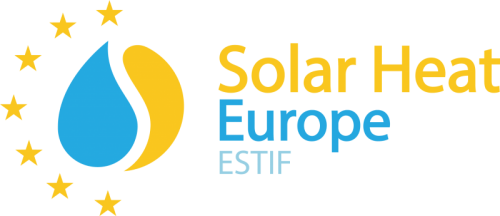Background information
The European Commission launched during summer a consultation on their energy statistics, more particularly the arrangements for the annual, monthly, and short-term monthly collection of energy statistics (Annexes to Regulation (EC) No 1099/2008).
More information on the consultation process: Energy statistics – updates for annual, monthly and short-term monthly data
The main focus of this consultation was to follow:
- international developments in the area of energy statistics;
- advances in the EU’s energy market; and
- changes in energy data needs.
One aspect, in particular, to be covered was related to the gathering of data on hydrogen and relevant interlinkages with other energy commodities.
Solar Heat Europe’s position
Solar Heat Europe contributed to this consultation in order to point out the relevance of improving the data collection and treatment, reflecting in the Eurostat data the relevance of solar thermal.
As part of the contribution, SHE’s proposals covered the following points:
– Valorisation of solar heat generation. the use of solar heat needs to be further valued and put into evidence, by referring to the generation capacity (in MWth) in addition to the surface area. This can be done using well-established and accepted conversion methods under IEA-SHC. This allows for a process gradually transitioning from the current data (surface area expressed in m2) to a reference common and comparable to other renewable generation technologies (expressed in MWth)
– Improvement of the definition of solar thermal. One aspect needed is to clarify that it also includes large-scale segments, such as Solar District Heating (SDH) and Solar Heat for Industrial Processes(SHIP). SDH is a large-scale solar plant (largest, in Denmark, has 110 MWth capacity) that provides heat to a district heating network. SHIP is a solar thermal system that provides heat to industrial processes, ranging from low to medium temperatures, such as food processing, textile manufacturing, or chemical production. Both are rapidly growing segments that are often overlooked or underreported. We suggest that the statistics adopt a broader definition of solar thermal that encompasses these segments and applications.
– Inclusion of hybrid PV and thermal solar collectors (PVT) in statistics. PVT collectors are innovative devices that combine both PV and thermal functions in one product to produce both electricity and heat from the same surface area, increasing the efficiency and versatility of the solar panel. However, PVT panels are not well captured by the current statistics, which tend to count only one output (either power or heat) or none at all. We recommend that the statistics refer that both the thermal and the power output of these collectors need to be covered. This can be done either by creating a specific category for PVT collectors (preferred) or by accounting for both their power and thermal output under the respective categories for PV and solar thermal.
– Improvement of the definitions for the different technologies, namely the reference to rooftop. Both PV and solar heat include rooftop or building integrated solutions, hence the currently proposed characterisation “rooftop solar” being now used just for PV is misleading. We suggest changing the “rooftop” category to “PV in buildings”, including rooftop PV and BIPV. Rooftop solar thermal applications would then be covered under the general “solar thermal” classification, as it should be the case already today.
The overall arguments and the concrete proposals can be found online, in the annex to SHE’s contribution at the EC’s consultation page.
More information
For more information about this consultation and SHE’s position, please contact members@solarheateurope.eu.


Leave a Reply